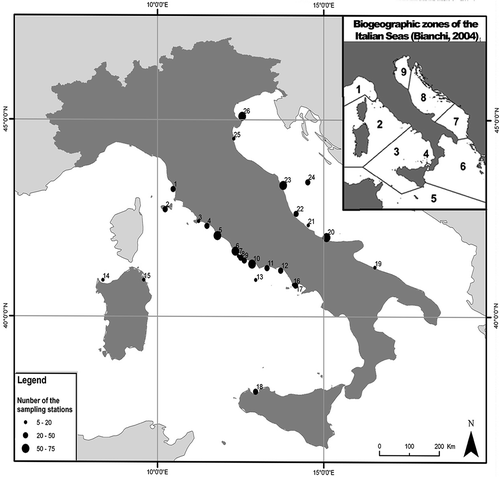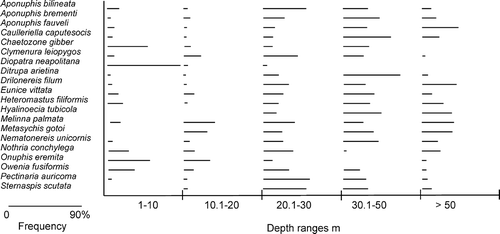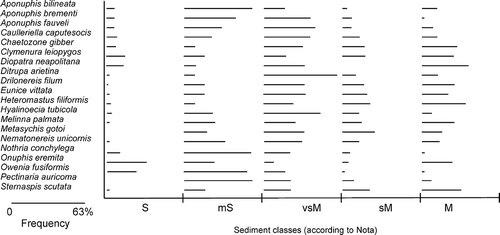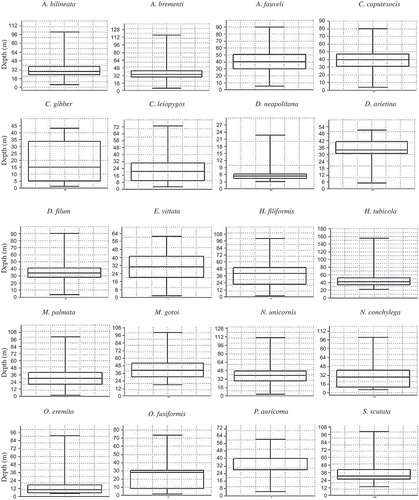Figures & data
Table I. The 26 study areas located in the nine biogeographical zones identified in the Italian Seas (Bianchi Citation2004), the number of sampling stations for each area, divided into depth ranges ( C= Central; S= South; N=North)
Table II. Distribution of the 20 selected species by the nine biogeographical zones of the Italian Seas. In white, the distribution of the selected species as reported in the Checklist of Flora and Fauna of the Italian Seas (Relini Citation2008); in grey, records confirming the species distribution; in black, new records distribution of five species (Aponuphis bilineata, A. brementi, A. fauveli, Nothria conchylega, and Onuphis eremita)
Table III. Frequency of station in each Nota's sediment class where each species was found. Species occurrence is also clustered into classes of relative abundances (%) of each species within the whole polychaete assemblages (S = sand; mS = muddy sand; vsM = very sandy mud; sM = sandy mud; M = mud)
Table IV. The species-group contributions obtained from Indicator Species Analysis (ISA). The indicator values of ISA specify the groups of stations that are associated with the species with different levels of significance
Table V. For each species, information on biocoenoses affiliation, ecological significance, sediment typologies and depth ranges, as emerging from previous literature and from the results of this study. Results are listed in alphabetic order. Abbreviations: C = coralligenous biocoenoses, DC = biocoenoses of coastal detritic, DE = biocoenoses of muddy detritic, DL = biocoenoses of the shelf-edge detritic, SFBC = biocoenoses of well-sorted fine sand, SVMC = biocoenoses of surface muddy sands in sheltered waters, VTC = biocoenoses of coastal terrigenous mud, MI = Communities of unstable soft seabeds, excl. exclusive species, pref. = preferential species, sand tol. = species living on sands and tolerant to other fractions, mud tol. = species living on muds and tolerant to other fractions, Grav. = species living on gravely sediments, Lre = species with wide ecological distribution, Mixt. = species living on mixed sediments



